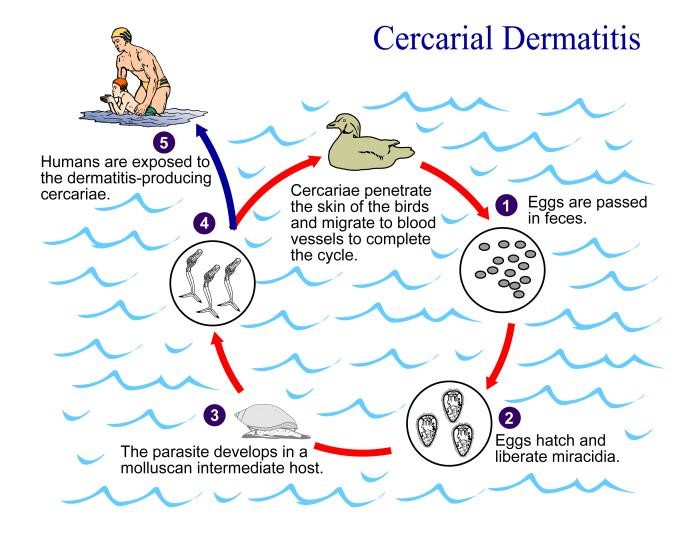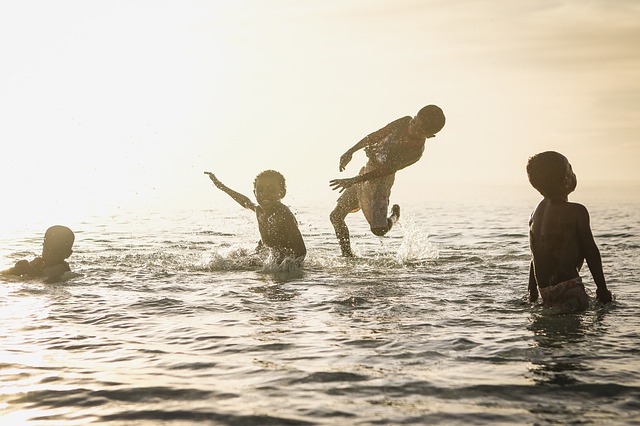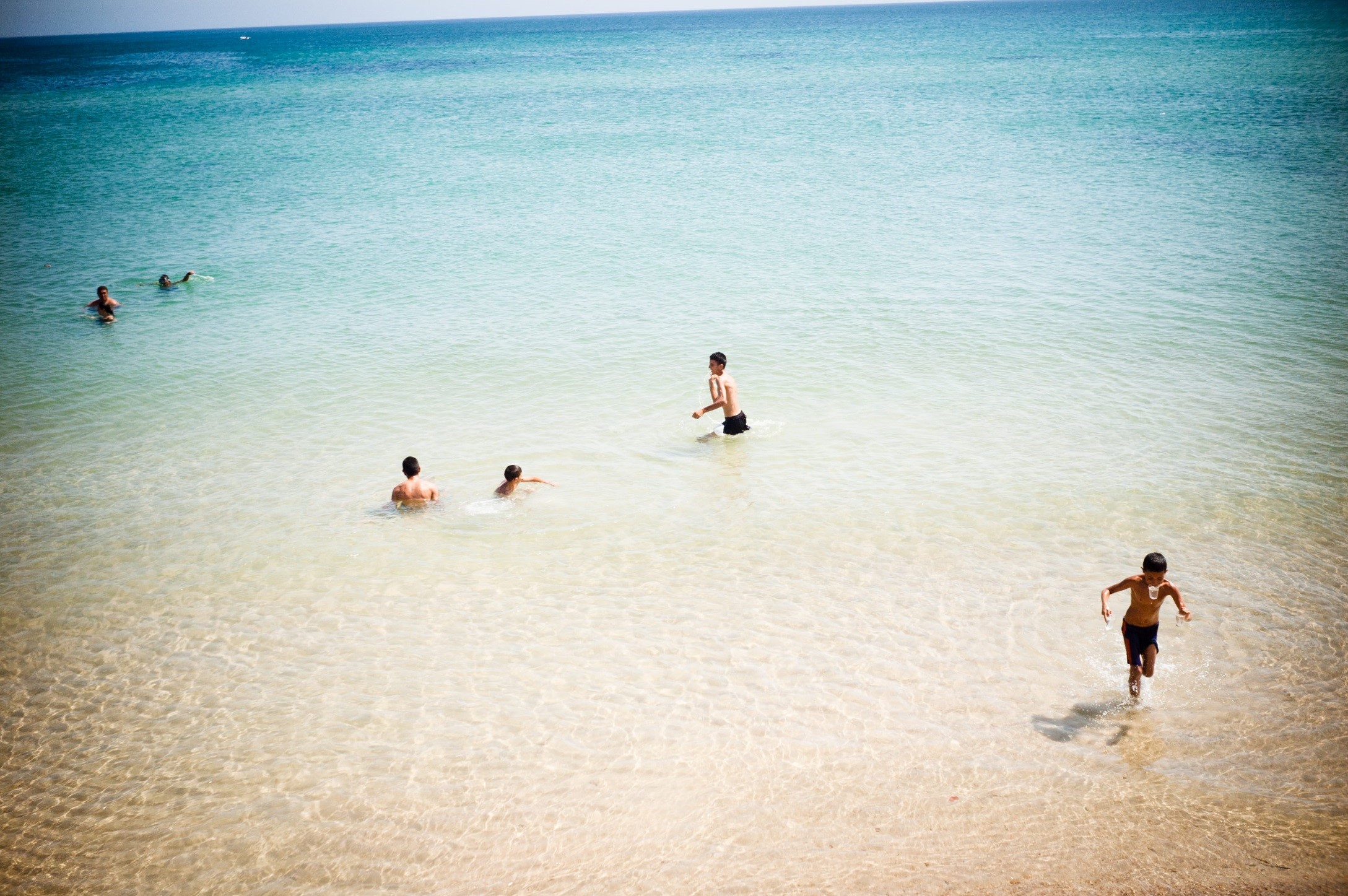Swimmer’s Itch
Report a Case
Disease Reporting Line:
(808) 586-4586
About This Disease
Swimmer’s itch is a rash caused by an allergic reaction to certain microscopic parasites that infect birds and animals. These parasites are released from infected snails into fresh and salt water. The infection is found throughout the world and is more frequent during summer months.
Signs and Symptoms
The first symptoms can begin within a few minutes to days of exposure to the contaminated water. First you may experience tingling, burning, or itching of the skin. Small reddish pimples appear within 12 hours. Pimples may develop into small blisters. Itching may last up to a week or more, but will go away gradually. Scratching the areas may result in secondary bacterial infection. Because swimmer’s itch is caused by an allergic reaction, the more often you are exposed to contaminated water, the more intense and immediate symptoms of swimmer’s itch will be.
Transmission
You can get swimmer’s itch by swimming or wading in waters contaminated with the parasite. The parasite larvae burrow into human skin and cause allergic reactions and rash. The risk of being infected is greater in shallow water by the shoreline with warm temperature. Although anyone can get swimmer’s itch, children are infected more often since they tend to swim, wade, and play in the shallow water more than adults. Also, they are less likely to towel dry themselves when leaving the water. Person-to-person spread does not occur, since these larvae cannot develop and survive in a human host.
Diagnosis
Diagnosing swimmer’s itch can be a challenge because the rash can resemble other skin problems, such as poison ivy. There are no specific tests to diagnose swimmer’s itch.
Treatment
Most cases of swimmer’s itch do not require medical attention. If you have a rash, you may try the following for relief:
- Use corticosteroid cream
- Apply cool compresses to the affected areas
- Bathe in Epsom salts or baking soda
- Soak in colloidal oatmeal baths
- Apply baking soda paste to the rash (made by stirring water into baking soda until it reaches a paste-like consistency)
- Use an anti-itch lotion
If itching is severe, your doctor may recommend a prescription medication. Although it is very difficult, try not to scratch as doing so may cause the rash to become infected.
Risk in Hawaii
Swimmer’s itch is not reportable in Hawaii, but it is known to occur.
Prevention
- Do not swim in areas where swimmer’s itch is a known problem or where signs have been posted warning of unsafe water.
- Do not swim near or wade in marshy areas where snails are commonly found.
- Towel dry or shower immediately after leaving the water.
- Use protective gears such as rubber wading boots as needed.
- Do not attract birds to areas where people are swimming.
- Apply waterproof sunscreen before entering the water may provide protection.
Information for Clinicians
The allergic reaction to penetrating cercariae is self-limiting; signs and symptoms usually will resolve within 1–2 weeks. Minimal symptomatic treatment and good hygiene to prevent itching and secondary infections are usually sufficient treatment for most cases of cercarial dermatitis.
Treatment of cercarial dermatitis has not been evaluated in clinical trials. Systemic antihistamines or topical antihistamines or corticosteroids can be used to reduce symptoms. Topical antiseptics or antibiotics as well as systemic antibiotics may be needed in the case of secondary infection.
For more information: Centers for Disease Control and Prevention (CDC)
Last Reviewed: June 2024





